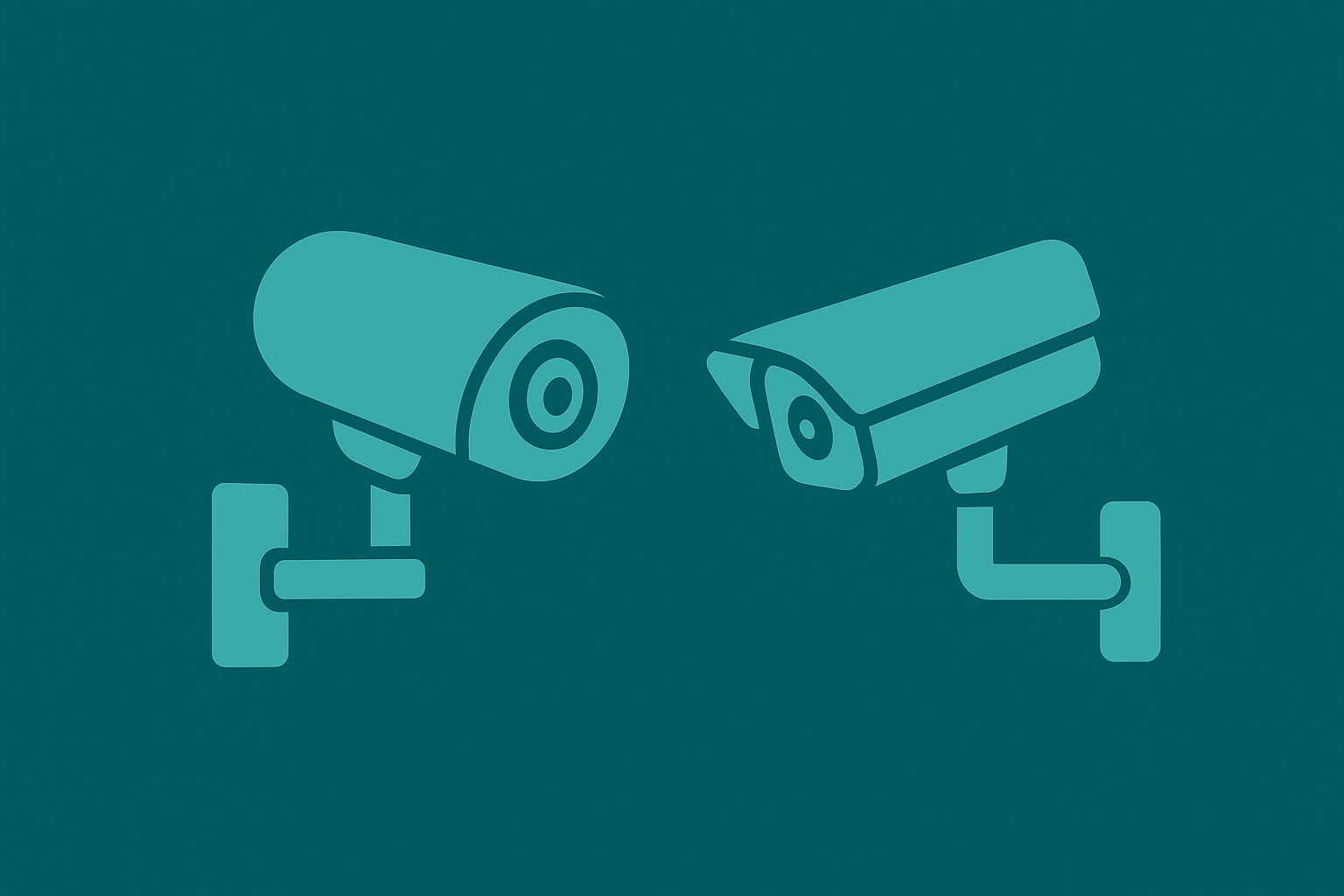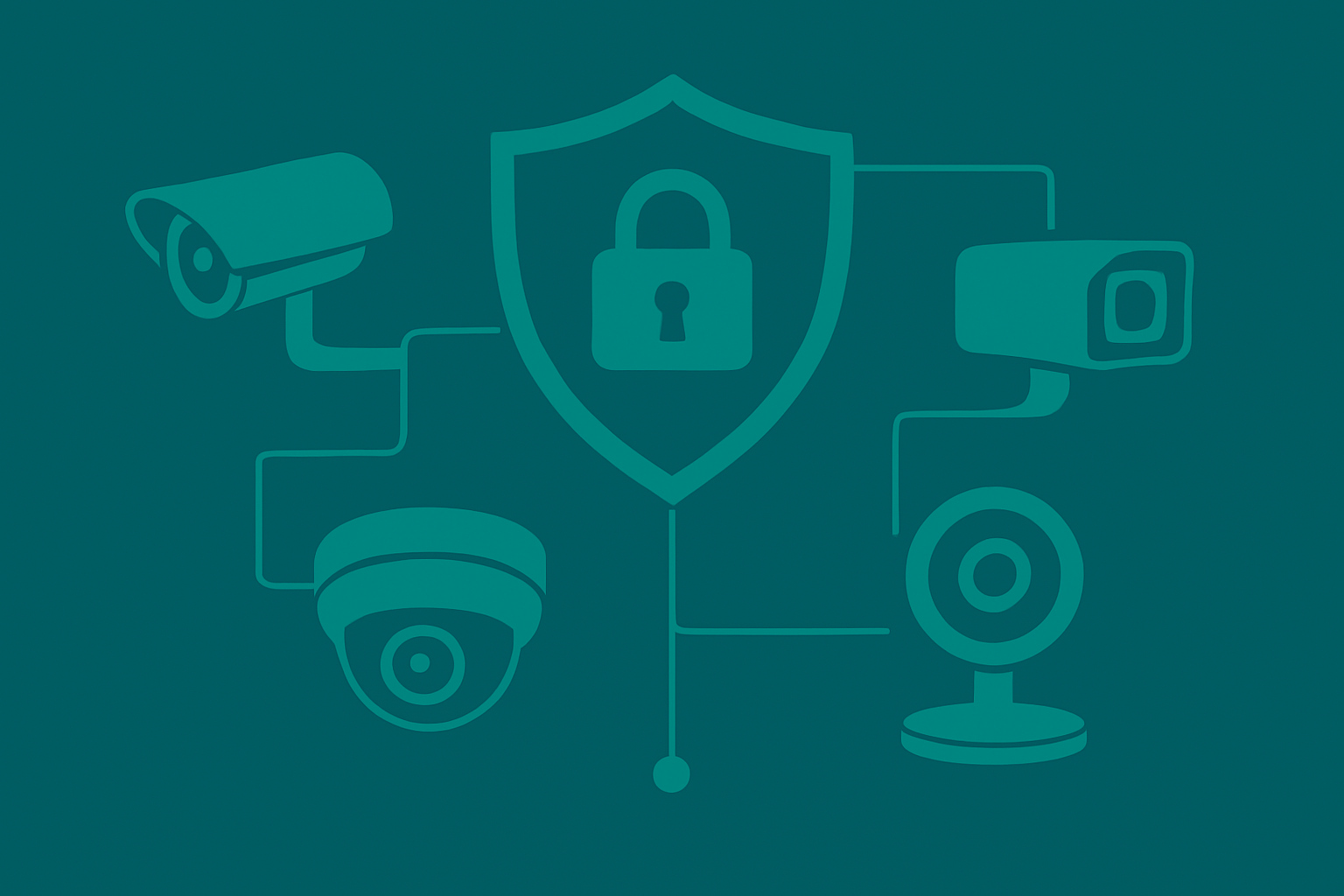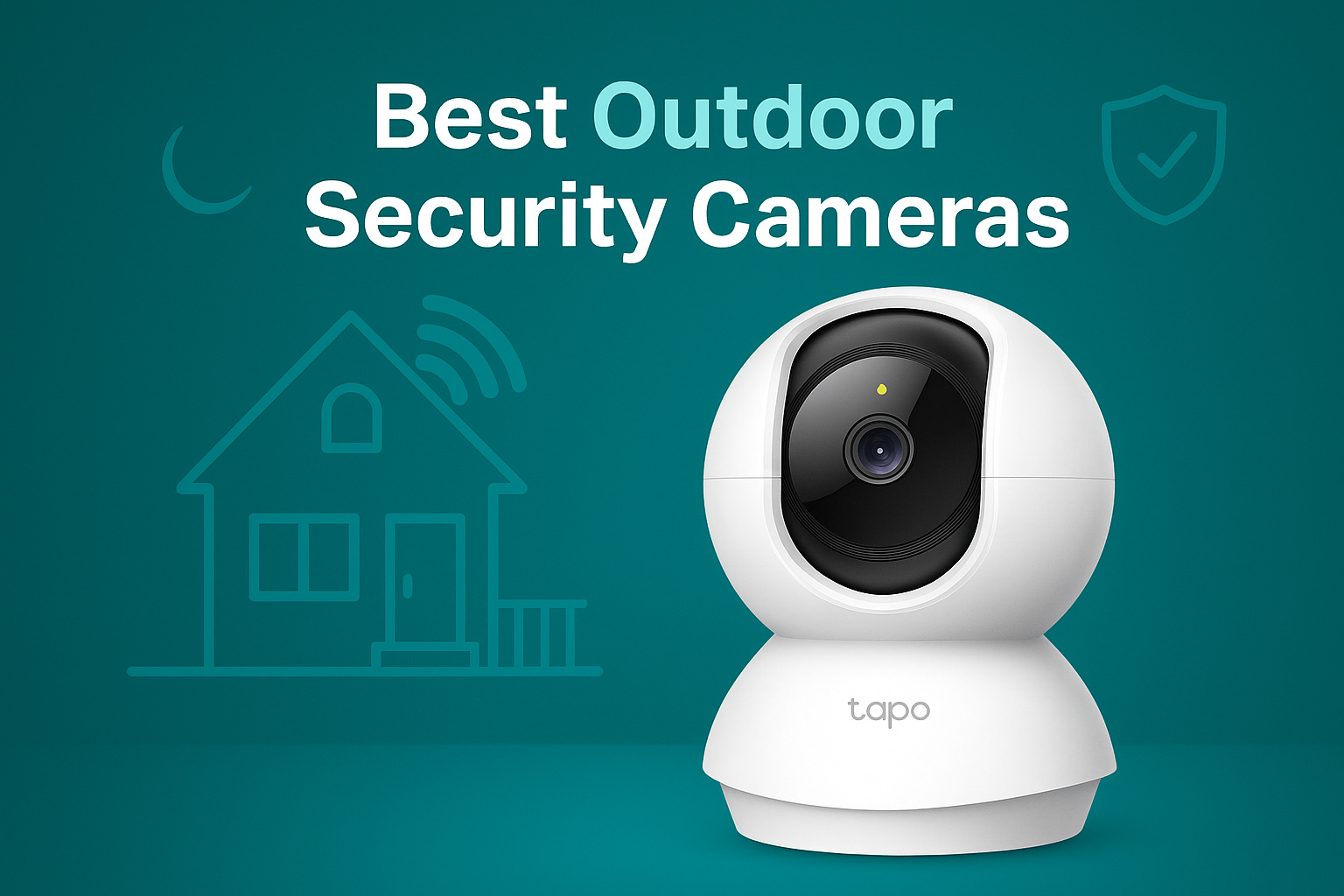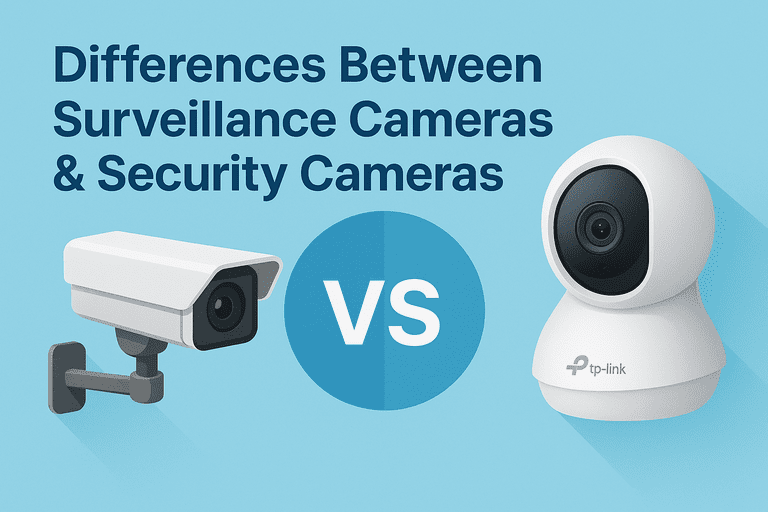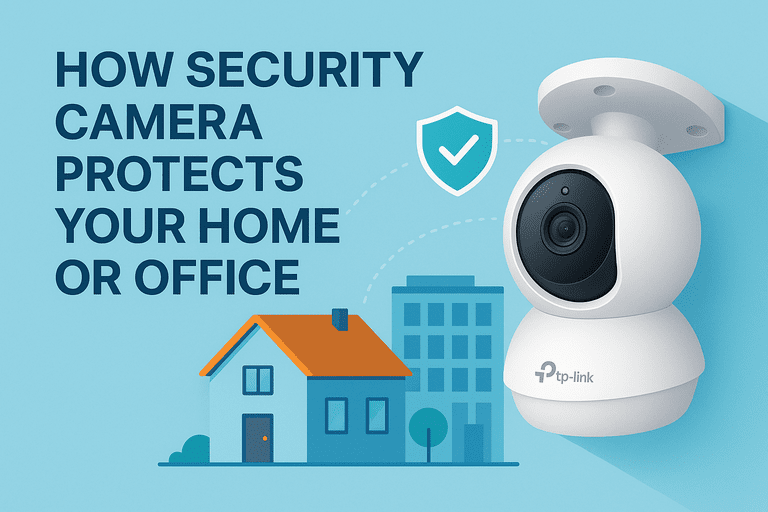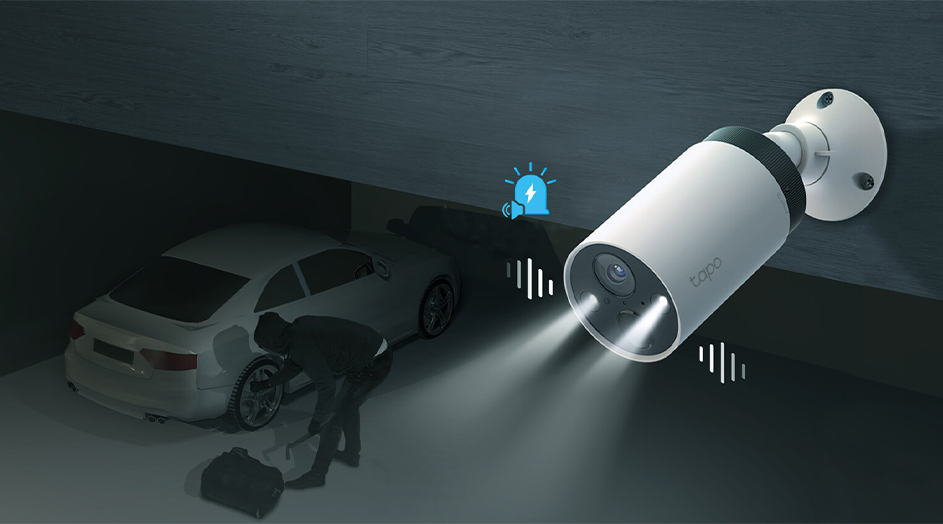Indoor vs. Outdoor Security Cameras: What to Choose?
Did you know that houses with security cameras are 300% less likely to be burglarized? Security cameras protect your home, office, or any other valuable space. They are a strong deterrent to burglars, who often avoid targeting homes with visible security measures.
But it can be challenging to choose the right one, and sometimes it's confusing whether an indoor or outdoor camera fits your needs. We will explain the differences and how to choose the right security cameras for your home or office below.
What Are Indoor Security Cameras?
Indoor security cameras are designed for monitoring spaces within a building, such as entryways, hallways, storage rooms, and other crucial indoor areas. The following are some popular features of indoor cameras:
-
Compact design: Indoor cameras are often smaller and less intrusive than outdoor models, blending seamlessly with home or office decor.
-
High resolution: Many indoor cameras offer high-definition video to capture details clearly, even in low light.
-
Two-way audio: To facilitate two-way communication with family members, employees, or even pets, some indoor cameras come with a built-in microphone and speaker.
-
Wide-angle lenses: To capture an entire room or hallway, indoor cameras may have a wide-angle lens to reduce the need for multiple cameras.
Indoor cameras are ideal for checking on valuables, monitoring children or elderly family members, and securing entry points. They are affordable and simple to install but are not built for exposure to outdoor conditions.
Here are the best indoor security cameras from TP-Link:
1. Tapo C200 (Pan/Tilt): It offers excellent value for indoor monitoring with its pan/tilt capabilities, high-quality 1080p resolution, and the ability to communicate via two-way audio.
2. Tapo C100 WiFi Camera: With solid performance at a budget-friendly price, this camera is great for keeping an eye on smaller spaces like bedrooms or entryways and offers motion detection and night vision.
3. Tapo C210 (Pan/Tilt 2K): For those seeking higher image quality, the Tapo C210's 2K resolution is ideal. The pan/tilt function and two-way audio make it versatile for monitoring large rooms, with extra clarity.
Advantages and Disadvantages of Indoor Cameras
Here are some pros and cons of indoor cameras:
Advantages:
-
Easier to install with minimal wiring or mounting
-
Generally more affordable
-
Suitable for monitoring pets, children, or elderly family members
-
Compact design blends with home decor
Disadvantages:
-
Limited to indoor areas, they won’t function well in outdoor conditions
-
May lack advanced deterrence features like sirens or floodlights
What Are Outdoor Security Cameras?
Outdoor security cameras are rugged devices designed to withstand varying weather conditions and harsher environments. People place them outside to monitor areas like driveways, yards, entrances, or perimeters. Outdoor CCTV cameras have the following features:
-
Weather resistance: These cameras come with weatherproof ratings (like IP65, IP66, etc.) to protect against rain, dust, and even extreme temperatures.
-
Night vision or infrared: Outdoor cameras often have night vision or infrared LEDs, allowing clear footage even in complete darkness.
-
Motion detection: Many outdoor models offer motion detection to alert you of any unusual movement around your property.
-
High durability: Outdoor cameras are built with more durable materials to prevent damage from physical impacts, tampering, or other potential risks.
Outdoor cameras are best for monitoring areas around the home, preventing intrusions, and capturing activities that might go unnoticed otherwise.
Here are the best outdoor security cameras from TP-Link:
1. Tapo C310 WiFi Camera: Super HD resolution, long-range night vision, and weatherproof design make the Tapo C310 a great outdoor monitor. It provides clean video in low light for driveways, front entrances, and backyards.
2. TP-Link Tapo C320WS: It records every image in crystal-clear 2560x1440 definition and notifies you when the camera detects movement. With C320WS, you can store up to 512GB 2K QHD video on a microSD card, offering convenient access to your video footage.
3. Tapo C400S2 (Wire-Free Outdoor): Offers excellent waterproof and dustproof performance for outdoor scenarios. No wires means you can place the cameras almost anywhere inside or outside—whatever works for you!
Advantages and Disadvantages of Outdoor Cameras
Here are the pros and cons of outdoor cameras:
Advantages:
-
Provide extra security for entrances and perimeters
-
Durable and resistant to weather
-
Often include deterrence features like motion lights or sirens
-
Stronger night vision capabilities
Disadvantages:
-
Generally more expensive
-
May require additional mounting and wiring for proper installation
-
Can be more visible, which might be a concern for some users
Differences Between Indoor and Outdoor Security Cameras
Knowing the differences between indoor and outdoor security cameras is crucial when deciding which is best for your space. Here’s a quick breakdown:

Choosing Between Indoor and Outdoor Security Cameras
To choose the right type of security camera, consider these critical factors:
Location and Coverage Needs
-
If you need to monitor interior spaces (living rooms, hallways, etc.), go for indoor cameras. They provide adequate coverage without the need for weatherproofing.
-
Outdoor cameras are ideal for areas exposed to the elements, like the garage, backyard, or any area outside your property that you want to keep secure.
Weather Conditions
-
Built to withstand heat, cold, rain, and dust, outdoor cameras are ideal for outdoor use. Always check the camera’s IP rating (Ingress Protection), which indicates how well it’s shielded against moisture and dirt.
-
If you live in an area with severe weather, select an outdoor camera with a high IP rating (IP66 or IP67) for enhanced durability.
Security Level
-
Outdoor cameras deter potential intruders, as they’re visible and often equipped with smart motion-sensor lights or alarms.
-
Despite their subtlety, indoor cameras enable you to monitor valuable items or keep a close watch on family members, staff, or pets.
Power Source and Connectivity
-
Wired or wireless: Both indoor and outdoor cameras can be wired or wireless, so think about power sources. Indoor cameras might use an AC power outlet, while some outdoor models can be solar-powered.
-
WiFi or Ethernet: For both types, WiFi is convenient but can be affected by obstacles like walls. Ethernet (wired) connections are often more stable but may limit camera placement.
Additional Features
-
If you want two-way communication, many indoor cameras come equipped with a speaker and microphone, allowing you to speak with someone at the other end.
-
Outdoor cameras with sirens or floodlights provide extra security by actively deterring intruders, which isn’t typically necessary for indoor models.
Combining Indoor and Outdoor Cameras for Better Coverage
For comprehensive security, many people choose a mix of indoor and outdoor cameras. This allows you to monitor both the outside and inside of your property. Here’s how a combination could work effectively:
-
Use outdoor cameras to cover entry points and the perimeter, capturing any suspicious activity before it enters the property.
-
Place indoor cameras in essential areas like the living room, entryways, or hallways to monitor movement within the home and protect valuables.
Both indoor and outdoor security cameras have unique features, so your choice depends on your specific security needs. Indoor cameras are perfect for monitoring people, pets, or valuables indoors, while outdoor cameras provide a robust defense against potential intruders by covering the perimeter and entry points.
Ready to boost your home’s security? TP-Link offers a range of indoor and outdoor security cameras designed for reliable performance and durability. Discover the perfect combination of cameras for full coverage and experience trusted security solutions.
FAQs
1. Can indoor cameras be used outdoors?
Indoor cameras are not built to withstand the elements, and exposure to moisture, dust, or extreme temperatures could damage them.
2. Are outdoor cameras more expensive than indoor cameras?
Outdoor cameras tend to be more expensive due to their additional features, such as weatherproofing, enhanced night vision, and motion detection. Prices also depend on the brand and specific camera features.
3. Are wireless outdoor cameras reliable?
Wireless outdoor cameras can be reliable, but they depend on the strength of your Wi-Fi signal. If your outdoor camera is far from your router or in an area with poor signal strength, it might experience connectivity issues. You may need a Wi-Fi extender for outdoor use.
4. How do outdoor security cameras improve business security?
Outdoor security cameras improve business security by acting as both a deterrent and a monitoring tool. When visible, these cameras can discourage theft, vandalism, or other suspicious activities around your building. They help protect entrances, parking lots, and loading areas—places often targeted after hours.
5. Why is night vision important in outdoor security cameras?
Night vision is important in outdoor security cameras because many security threats happen after dark when visibility is low. With night vision, cameras can capture clear footage even in total darkness, helping you monitor your property 24/7. This means you can still see faces, license plates, or suspicious activity at night—crucial for identifying intruders or responding to incidents.
